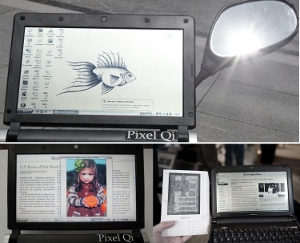Charlie Rose/Ken Auletta on the OLPC/Intel Breakup
April 16, 2008
When asked about the Intel/OLPC break-up by Charlie Rose on his January 23 2008 broadcast, Ken Auletta of the New Yorker Magazine responds:
“They [Intel] looks at it as a busines model, they probably think that if you sell it too cheap you can’t make any money that way, they [Intel] want cheaper computers and laptop computers but not at $100. I’m sure that is the reason, they don’t say that publically but that’s the reason Intel pulled out [of OLPC]. They are, after all, in business”
Link to video webcast of Charlie Rose 1/23/08 broadcast
Did Ken Auletta get it right?
We now have more data from the first quarter of 2008: The new batch of low-cost compact laptops initially were announced in January 2008 with price targets of around $300. This is 60% higher in cost than the XO laptop price from last year (2007) at $188. In electronics, prices are supposed to go down from year to year - not up. More recent announcements this month from large laptop makers move price estimates higher: drifting upwards to $400 and $500 per compact laptop. HP recently announced a compact notebook product with a $500 target pricetag. This comes as several 14″ or 15″ laptops are already being sold below the $500. Could it be that compact laptops will be a premium product and afford better margins than current conventional size laptops? Is Ken right?
Laptop makers are in a bit of a bind.
When they introduce a new product, they don’t know how many they will sell initially. The direct variable costs of laptop production can drastically increase the per unit price if the laptop doesn’t become a hot product. Essentially, the laptop makers have seen an emerging product category birthed by OLPC (and also Asus’s EEE PC) and want to get in on it. Paradoxically this may raise the price by diluting the field while everyone tries their hand at a little, cute, compact laptop: but at the prices the manufacturers are bantering about this month I wonder if any will move off the shelves.
At Pixel Qi we are focused on the working with the high volume customers that are interested in bringing the price of computers down and delivering laptops to all, and if Ken is right, there are still many other companies that would like to see the cost of laptops drop. It’s already happened with DVD players, calculators and many other consumer electronics, why are laptop prices staying high and how long can it continue?

I am a CTO of a k-12 district in the US. The district is purchasing tablet computers for our students. We currently own over 5,500 tablet PC’s that are distributed to students while they attend schools in our district. We will be distributing more devices to campuses in the next 4 years. The price point for devices are a very large concern of our district. We have discovered that the pen technology is very important in integrating the devices in all areas of the curriculum. It seems that the pen technology is becoming more available over seas and not in the US. I’ve read about the Pixel Qi and very interesed in receiving more information about the product. Our state is moving to onlin, end of course testing by 2011. All students will be required to pass a test taken on line in order to advance to the next grade level. We are committed to provide the tools for the students, but the price point of pen technology devices are premitting us from deploying it in such a way that it can impact All Students. I realize that the “3rd” world countries need the technology, but schools in the US are suffering as well. They cannot affort the devices that will actually impact learning. The lap is a great start, but it can only be used in 50% of the curriculum areas, where as a device that has pen technology can be used in all areas of the curriculum. Price as well as integration into the curriculum should be the primary focuses of the devices that are developed. The curriculum should drive the technology, not the technology drive the curriculum.